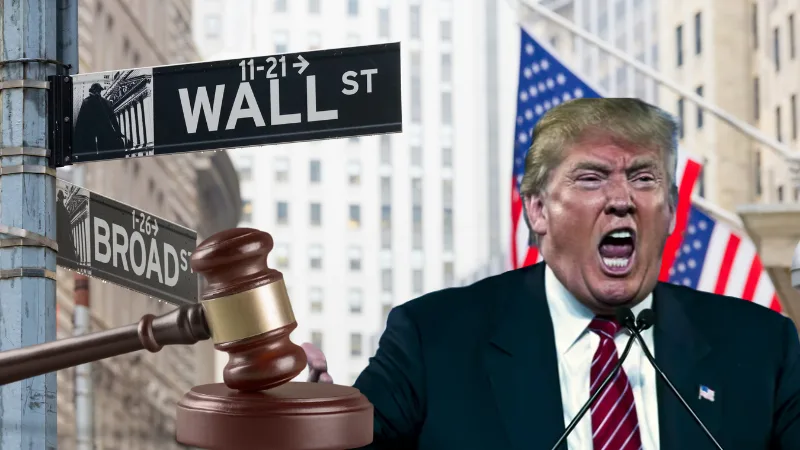President Donald Trump recently announced the formation of the Department of Government Efficiency (DOGE), appointing high-profile leaders Elon Musk and Vivek Ramaswamy to head the initiative. DOGE aims to overhaul government bureaucracy, reduce waste, and streamline operations across federal agencies. This collaboration marks a novel approach to modernizing federal operations, with private-sector leaders bringing innovative, entrepreneurial strategies to the public sphere.
In this article, we’ll explore the background of DOGE, the profiles of Musk and Ramaswamy, potential impacts on the economy, and the challenges ahead.
Background on DOGE
The Department of Government Efficiency was introduced by Trump as part of his renewed focus on reducing bureaucratic bloat and making government more accountable to taxpayers. Operating in an advisory capacity rather than a formal department, DOGE will work closely with the White House and the Office of Management and Budget. Similar attempts to reform government efficiency, such as the Grace Commission under Ronald Reagan, highlighted the potential for cost reductions but encountered challenges due to federal resistance and logistical complexities.
Profile of Key Appointees: Elon Musk and Vivek Ramaswamy
Elon Musk, CEO of Tesla and SpaceX, is known for his focus on innovation, efficiency, and reducing operational costs. Musk has advocated for transparent operations, which he intends to bring to DOGE by implementing publicly accessible spending records.
Vivek Ramaswamy, a biotech entrepreneur and former Republican presidential candidate, emphasizes lean, purpose-driven government structures. In his campaign, Ramaswamy often spoke about the need to curtail “big government” spending, a principle he will likely apply in his new role with DOGE.
Potential Economic Impact
DOGE’s objectives include cutting excessive regulatory costs and trimming bloated federal budgets. According to fiscal policy expert Romina Boccia, reducing bureaucratic waste could save billions and redirect funds toward critical national priorities. However, the actual economic impact depends on DOGE’s ability to overcome potential resistance within entrenched federal structures.
Public Engagement Strategy
One of Musk’s innovative ideas for DOGE is a public “leaderboard” that will highlight wasteful government spending, encouraging citizens to participate in spotting inefficiencies. This model mirrors Musk’s commitment to transparency in his corporate ventures, such as Tesla’s open-sourcing patents, which allowed the public to benefit from their innovations. The leaderboard concept could engage taxpayers more directly in governance, promoting a culture of accountability.
Challenges and Criticisms
Although DOGE has ambitious goals, it will likely face resistance from federal agencies. Past attempts at federal efficiency reforms, such as the National Partnership for Reinventing Government in the 1990s, encountered significant pushback from established government entities. Political analyst and government reform expert Donald F. Kettl suggests that reforms “almost always fail when they confront entrenched bureaucratic structures” . DOGE’s success will hinge on Musk and Ramaswamy’s ability to drive cultural change within government institutions.
Timeline and Milestones
DOGE has set an ambitious timeline, aiming to showcase initial efficiency improvements by July 4, 2026, marking the nation’s 250th anniversary. Readers can expect a series of progress updates, with specific milestones like quarterly reports detailing cost reductions, operational changes, and areas where inefficiencies have been cut. A structured timeline will provide transparency and accountability to DOGE’s progress.
Comparison to Private Sector Efficiency
Musk’s emphasis on efficiency in Tesla’s supply chain and SpaceX’s rocket development offers a glimpse into the operational changes DOGE might push within government. This approach mirrors principles from the private sector, where lean management techniques—focused on waste reduction and resource optimization—have shown success (Harvard Business Review).
Expert Opinions
Experts on government reform have expressed cautious optimism about DOGE’s potential impact. “Bringing leaders from the private sector to handle inefficiencies in government is not a new idea,” says Andrew Biggs, a senior fellow at the American Enterprise Institute. “However, the effectiveness will depend largely on the level of cooperation from within the government and the transparency DOGE promises to bring” (American Enterprise Institute).
Public Reaction and Polls
Public opinion on Musk and Ramaswamy’s appointments has been mixed, with supporters eager for tangible cost-cutting measures and skeptics questioning DOGE’s ability to navigate governmental complexities. A recent YouGov poll shows that while 60% of Americans support governmental reform efforts, 35% remain doubtful about the effectiveness of private-sector leaders in public roles (YouGov).
Conclusion
The Department of Government Efficiency, led by Elon Musk and Vivek Ramaswamy, represents a bold attempt at transforming the federal government’s approach to operations and spending. DOGE’s success will depend on navigating bureaucratic resistance, maintaining public engagement, and achieving measurable cost reductions. As this initiative unfolds, it will be closely watched as a potential model for bringing private-sector efficiencies into the public domain.





